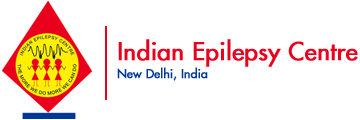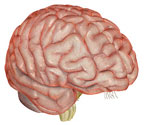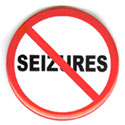
PLEASE CALL: 011-41614141
& 45695542
(Between 11:30 AM - 5:30 PM)

 |
FOR APPOINTMENTS PLEASE CALL: 011-41614141 & 45695542 (Between 11:30 AM - 5:30 PM) |
 |
Frequently Asked Questions On EpilepsyPROGNOSIS AND FUTURE: Q: What is the prognosis of epilepsy? A: It must be pointed out that MOST patients who develop seizures DO NOT BECOME EPILEPTICS. The usual prevalence rate of chronic epilepsy in the population is about 5 per 1000. On the other hand it has been estimated that up to 5% of the general population can experience non-febrile seizures at some point in their lives. So, almost one-tenth of all people who experience a single non-febrile seizure may go on to develop chronic epilepsy later on in life. The worldwide experience is that with early and proper treatment, almost 70% persons with epilepsy will achieve complete or near complete seizure control and almost 50% of these will be able to stop their treatment. In newly diagnosed persons with epilepsy, the future outcome is excellent if fits are adequately controlled with anti-epileptic drugs early in the course of treatment. If seizures are not controlled adequately or it takes a longer time to control fits, the prognosis is not that good. It must be remembered that early and effective treatment of epilepsy improves the long-term outlook for such persons. The prognosis of chronic epilepsy is somewhat different. It has been estimated that almost 20-25% of newly diagnosed epilepsy patients will develop chronic epilepsy. These people do have some problems due to their epilepsy but most of them also are entirely normal between seizures. Q: Are their any voluntary bodies or associations for the help of persons with epilepsy in India? A: There are two recognized organizations at the national and international level that look into various aspects of epilepsy. The Indian Epilepsy Association (IEA) looks after the non-medical and social aspects of epilepsy while the Indian Epilepsy Society (IES) is responsible for the medical aspects. At the international level, the corresponding bodies are the International Bureau for Epilepsy (IBE) and the International League against Epilepsy (ILAE). Additionally, there are many self help groups in large cities that are mainly managed by persons with epilepsy and their caregivers. Q: What is the future outlook for person with epilepsy? A: We all must remember that people with epilepsy are an integral part of our society and must be encouraged to lead a normal life. The society must realize that we should treat epileptics as we treat anyone with some other disease. Those who have epilepsy must consider it as a part of their lives and learn to live with it. Then only shall a person with epilepsy be able to earn his own livelihood and contribute his/her share to the society. If we continue to discriminate and stigmatize the epileptics, we shall have to support them. All those concerned with health administration, must think and plan about these and other aspects of epilepsy and the people with epilepsy in India. In the last few decades there have been significant advances in the health care facilities available to persons with epilepsy. At present a large number of fairly effective new anti-epileptic drugs are available. The surgical techniques for epilepsy surgery have significantly improved and are now being offered at a few centres in our country to all those patients who may be suitable candidates. The concept of ‘Epilepsy Centres’ that can provide comprehensive epilepsy care is fast catching up even in developing countries like India. We need many such “Epilepsy Centres” that can provide the best possible care to all sections of our society within our limited resources. There are costs for doing such things, but the costs for not doing them are perhaps higher!!! The recent revolution in molecular biology, and in particular, the Human Genome Project, offers unparalleled opportunities for identifying the genetic causes of human epilepsy. The genes for some of the human epileptic syndromes have already been identified. It is expected that such efforts in epilepsy are likely to transform our knowledge about the mechanisms involved in the genesis of seizures and human epilepsies in the not-too-distant future. The better understanding of the genesis of seizures is expected to result in the development of new and more effective anti-epileptic drugs. In addition, new pharmacology based on “gene therapy” is expected to open up new frontiers that will result in the better control of different seizures types. On the whole, the future of persons with epilepsy is definitely bright and those affected can certainly look forward to a much better quality of life. Next» MAIN |
Myths & Facts  |